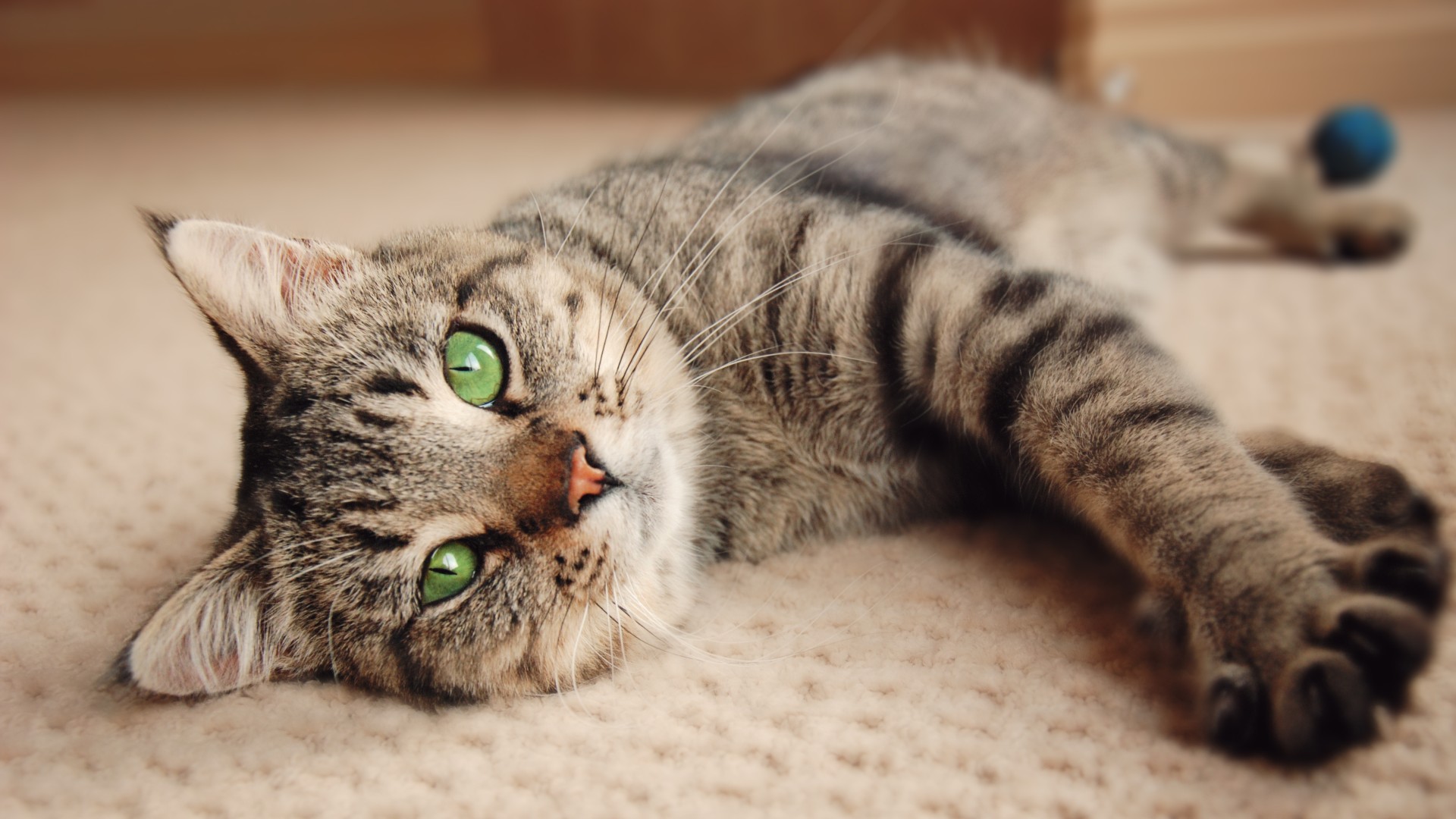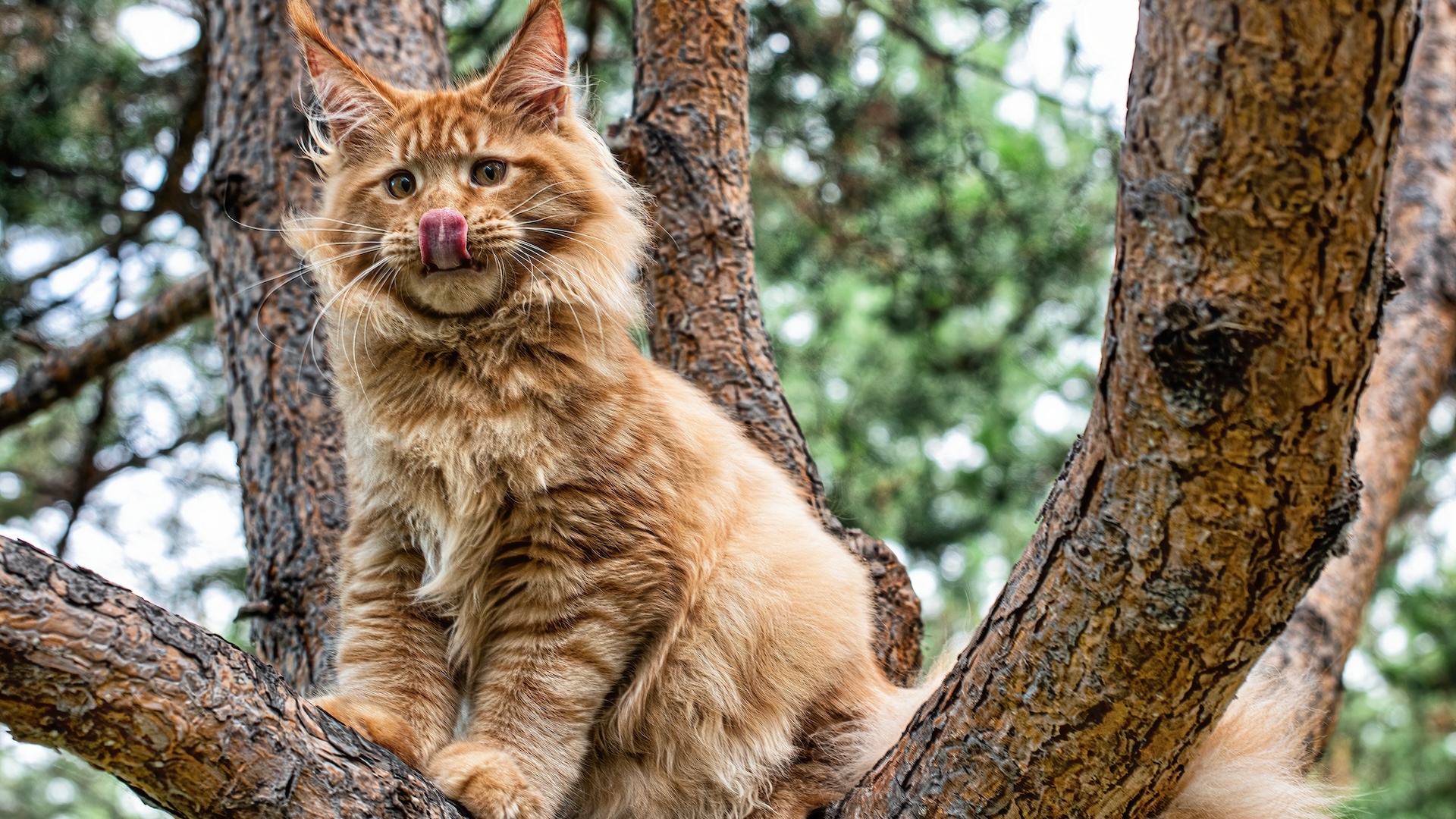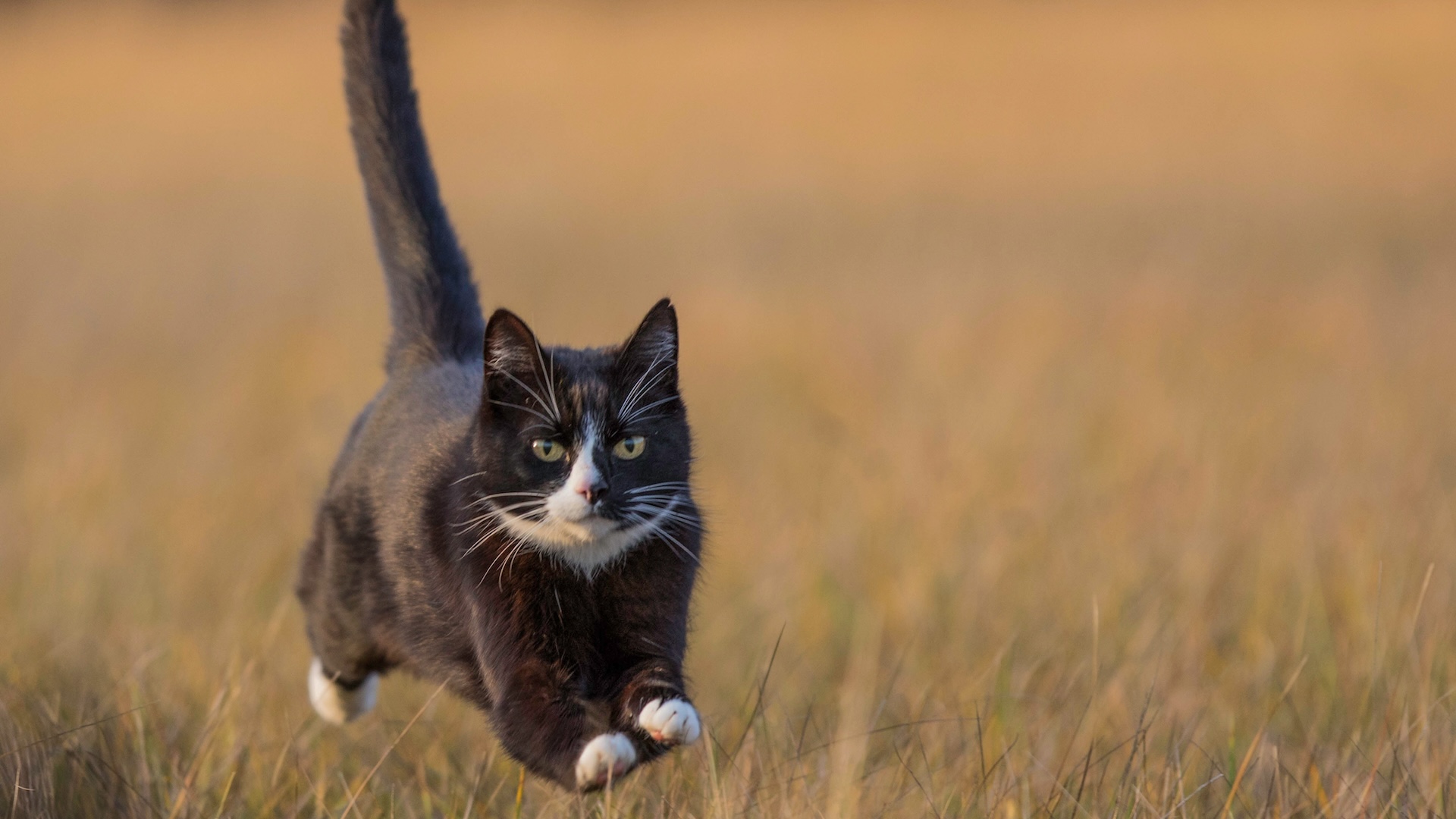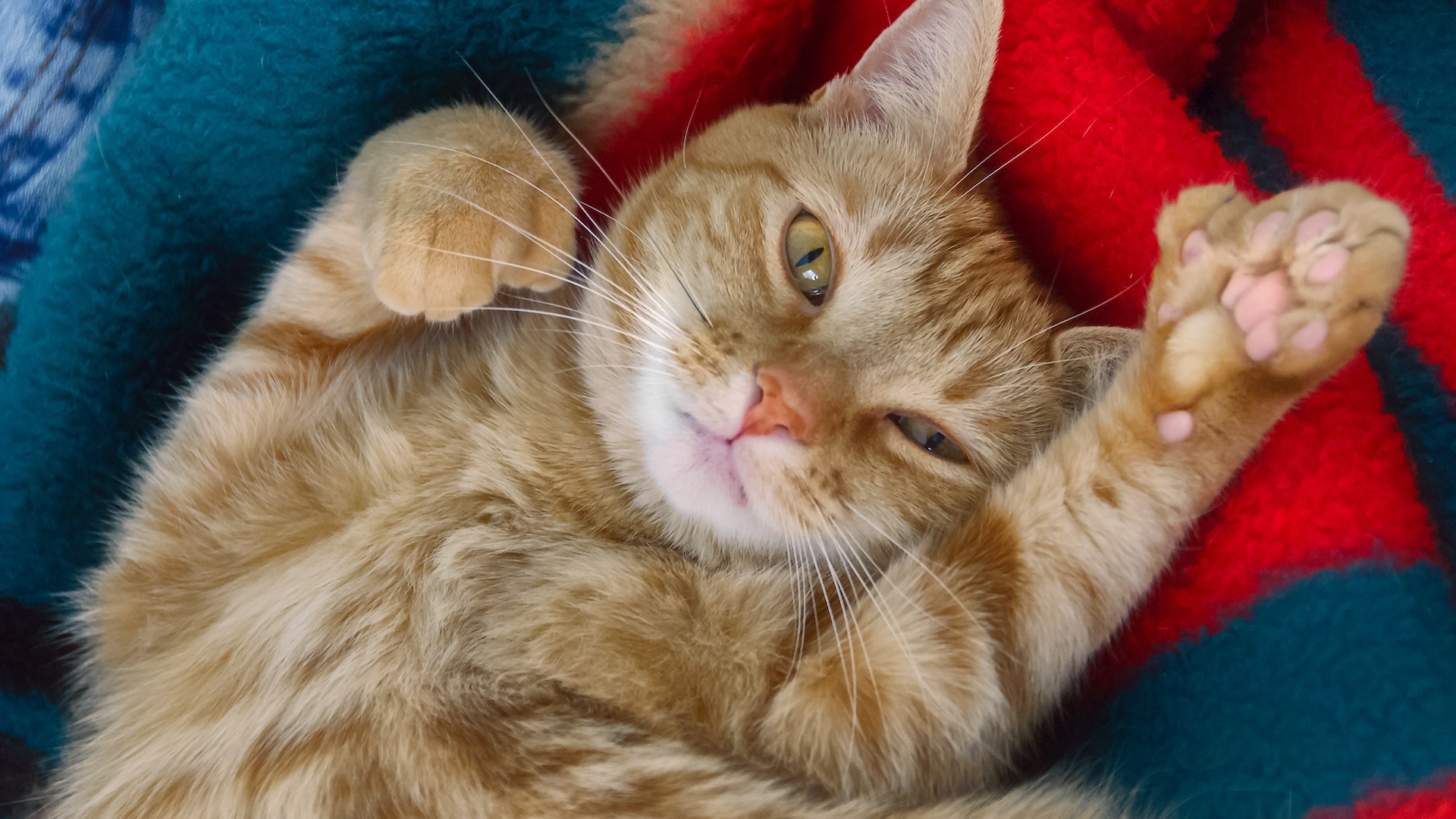Cats: Facts about our feline friends
Discover interesting facts about cat intelligence, how they see the world, and why we keep them around.

Where they came from: Wild cat ancestors in the Middle East
How long we've kept them as pets: At least 9,500 years
How high they can jump: Six times their own height
Around 10,000 years ago, cats likely domesticated themselves when they started hanging around human settlements for better rodent-hunting opportunities. Now, there are an estimated 600 million domestic cats living around the world. Their cute toe beans, striped and spotted coats, and soft bellies still delight cat lovers everywhere.
There's a lot of science to learn about our feline friends — from why cats purr and knead, to why they make weird faces after smelling something and throw up all the time. Read more to uncover new knowledge about cat breeds, feline intelligence and the special bond between cats and humans.
5 FAST FACTS ABOUT CATS
- Cats need to eat meat to survive
- The world's longest cat was a Maine coon named Stewie, who measured 48.5 inches (123 centimeters) from head to tail
- Cats use their whiskers to judge if they can fit through small spaces
- Unlike dogs, cats were never bred by humans for specific personality traits
- Domestic cats kill up to 4 billion birds annually in the U.S. alone
Everything you need to know about cats
Are there different breeds of cats?
Cats come in many breeds, though not with the same degree of diversity as dogs. The recognized number of cat breeds varies depending on the organization. The Cat Fanciers' Association recognizes 45 pedigreed breeds as well as the "companion cat," also known as "most regular cats," while the International Cat Association recognizes 73 breeds.
These breeds include relatively well-known varieties, like the slender Siamese cat and the fluffy Persian, as well as the leopard-spotted Bengal, the short-tailed American bobtail and the hairless Sphynx.
While dogs have been bred over centuries to carry out different tasks, leading to a variety of sizes and shapes of dog, domestic cats have only two jobs: controlling pests and being pets. This means that most pedigreed cats are bred for traits such as color and fur length rather than, say, a waterproof coat for swimming or a strong herding instinct for guarding sheep. Most cat breeds date to less than 100 years ago — although older breeds, like the Egyptian Mau or Persian, date back further.

Are cats smart?
Cats are intelligent, and the widely held belief that dogs are smarter than cats may not be supported by science. Felines display object permanence — or the ability to realize that something still exists when it's out of sight — which is an ability humans only develop when they are around 8 months old. Object permanence is an important skill to have when you're a hunter operating at night, listening for the telltale patter of tiny mice feet. Cats also recognize their owners' voices.
But cats don't always make their smarts easy to measure. "They're a nightmare to work with in the lab," said Julia Meyers-Manor, a psychologist at Ripon College in Wisconsin who studies animal cognition.
Compared with other animals, such as rats and dogs, few studies have been done on cat intelligence, Meyers-Manor told Live Science. Cats hate strangers and unfamiliar places, like labs, she said. They typically bury their faces in their owners' arms and refuse to cooperate with the task at hand.
Do cats feel emotion?
Cats might not be the most socially savvy, but there is evidence that they form bonds with their humans. Cats can develop separation anxiety, often displayed by peeing or pooping somewhere they shouldn't, and studies also suggest that cats rely on emotional cues from their owners when responding to new situations. Cats also seem to recognize the emotions of both humans and other cats.

How do cats see the world?
Cats have excellent nighttime vision. Their eyes are equipped with many rods, or special cells in the retina that are good at capturing dim light. This enables cats to see six to eight times better in the dark than humans can. A reflective layer in the eye also helps collect extra light at night. This layer is what makes cats' eyes shine green if a flashlight or headlight catches their eye in the dark.
Research suggests that cats can see ultraviolet light, which is blue light outside the range that humans can see. Cats likely don't see color as well as humans, though. They have two types of cells in their eyes that can detect short- and long-wavelength light, while humans have three. Their world probably looks more desaturated, or less colorful, and they also can't see long distances as well as humans. However, cats have a broader field of view than humans do: 200 degrees compared with 180 degrees for people.
Cats aren't particularly strong smellers, but their sense of hearing is very sensitive. Cats can hear frequencies between 55 hertz and 78 kilohertz. For comparison, the deepest sound a human can hear is 20 hertz, and the most piercing high sound is around 20 kilohertz.
How do cats help people?
Cats still work to control rats and mice around farms, nurseries and warehouses. But most of the time, a cat's job is to provide companionship for people.
Science suggests they do their job well. One study found that spending time with a cat reduced heart rate and blood pressure in both owners and volunteers who didn't own cats. Another study found that cats reduced their owners' negative moods. These effects may be tied to changes in brain activity. One study found that playing with, petting, training and feeding cats all activated a region of the brain called the prefrontal cortex that is linked to empathy and nonverbal communication.
The scientists said that cats' independence seemed to be key to making the cat-human relationship work. Getting a normally uncooperative cat to cooperate with play or training provided a big mood jolt, the researchers found. It turns out that for cats, playing hard to get pays off.
Cat pictures

Cats can run at a speed of about 30 mph (48 kmh). That's faster than Usain Bolt!

Some cats are born with extra toes — a condition called polydactylism.

Due to the way that fur color is passed down through genetics, almost all calico-colored cats are female.

Cats spend much of their time sleeping.

The tiny hooks on cats' tongues help them groom themselves and clean meat off of bones.
Get the world’s most fascinating discoveries delivered straight to your inbox.

Stephanie Pappas is a contributing writer for Live Science, covering topics ranging from geoscience to archaeology to the human brain and behavior. She was previously a senior writer for Live Science but is now a freelancer based in Denver, Colorado, and regularly contributes to Scientific American and The Monitor, the monthly magazine of the American Psychological Association. Stephanie received a bachelor's degree in psychology from the University of South Carolina and a graduate certificate in science communication from the University of California, Santa Cruz.
You must confirm your public display name before commenting
Please logout and then login again, you will then be prompted to enter your display name.


